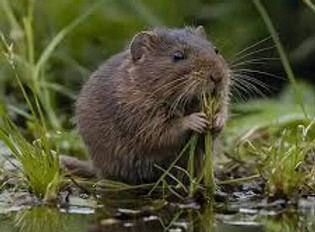Rodent Identification

Rattus norvegicus
Norway Rat
-
Size: Adults typically weigh ¾ to 1 pound.
-
Activity: They are nocturnal, with peak activity an hour after sunset and just before dawn.
-
Appearance: Reddish-brown to gray, heavy-set, with a blunt muzzle and a tail roughly the length of their head and body.
-
Habitat: They are common in urban, suburban, and coastal areas, especially in places with unsecured garbage and accessible food and water. They also follow sewers, ditches, and waterways.
-
Diet: Opportunistic feeders, they consume a variety of items, including meat, fish, grains, nuts, and fruits, but also thrive on garbage and decayed food.
-
Burrowing: Norway rats are ground-dwelling burrowers and dig extensive tunnels under foundations, concrete slabs, and in gardens.

Rattus rattus
Roof Rat
-
Appearance: Roof rats are slim, black to brown, with a body length of 5-7 inches and a tail that is as long or longer than their body.
-
Habitat: They are adept climbers and prefer living in attics, trees (especially palm trees), and high spaces within buildings.
-
Diet: They are omnivores, feeding on plants, fruits (especially citrus), pet food, and other stored foods.
-
Signs of Infestation: Look for gnaw marks on wood and electrical wires, droppings, foul odors in walls or ceilings, and sounds of gnawing or scurrying in attics or walls.
-

Mus musculus
House Mouse
-
Appearance: House mice have a brownish-gray body, a pointed snout, large rounded ears, and a thin, almost hairless tail that is often as long as their body.
-
Size: They are small, with a body length of approximately two to four inches, not including their tail.
-
Behavior: They are nocturnal, meaning they are most active at night.
-
Outdoor: Outdoors, they may nest in fields, under shrubs, or in agricultural areas where grains are stored.
-
Indoor: They can be found in wall voids, crawl spaces, cabinets, kitchens, and garages.
-
Droppings: Small, pointed, rice-grain-sized droppings.
-
Gnaw Marks: Evidence of gnawing on food packaging, wood, or wires.
-
Musky Odor: A distinctive musky smell in confined areas.
-
Sounds: Scurrying or scratching noises within walls or cabinets.

Microtus pennsylvanicus
Meadow Vole
-
Appearance: Dark brown with a brownish-black back and gray underside.
-
Size: They are a relatively small, stout rodent, approximately 6.5 to 7.5 inches in total length.
-
Features: They have a blunt head, short, rounded ears, and a short tail.
-
Diet: Voles have a plant-based diet, consuming grasses, roots, seeds, and bark.
-
Activity: They are active both day and night.
-
Burrows: Voles spend a significant amount of time in shallow, underground burrows and create surface runways through the grass.